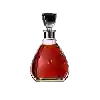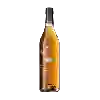
Winery Oiseau RebelleVVNT
This wine generally goes well with beef, veal or pasta.
Food and wine pairings with VVNT
Pairings that work perfectly with VVNT
Original food and wine pairings with VVNT
The VVNT of Winery Oiseau Rebelle matches generally quite well with dishes of beef, pasta or veal such as recipes of roast beef with caramelized onion, pasta romantica or locro criollo (argentina).
Details and technical informations about Winery Oiseau Rebelle's VVNT.
Discover the grape variety: Jaoumet
Its origin is uncertain, but it is thought to have been introduced into the Agly valley by a Trappist monk in the mid-19th century. Jaoumet is practically unknown in other French table grape-producing regions, although it is listed in the Official Catalogue of Table Grape Varieties, list A1.
Informations about the Winery Oiseau Rebelle
The Winery Oiseau Rebelle is one of of the world's greatest estates. It offers 4 wines for sale in the of Banyuls to come and discover on site or to buy online.
The wine region of Banyuls
Banyuls wines come from the South-eastern Part of Roussillon, in the south of France, in the lower Pyrenees, a few kilometres from the Spanish border. These naturally Sweet wines are consumed both as an aperitif and as a dessert. They come in a wide range of hues, from GoldenGreen (Banyuls Blanc) to Amber (Banyuls Ambré) to the intense garnet of the standard Banyuls Rouge. Unusually among the natural sweet wines of France, all Banyuls wines are made primarily from Grenache grapes of various colors.
The wine region of Languedoc-Roussillon
Languedoc (formerly Coteaux du Languedoc) is a key appellation used in the Languedoc-Roussillon wine region of southern France. It covers Dry table wines of all three colors (red, white and rosé) from the entire region, but leaves Sweet and Sparkling wines to other more specialized appellations. About 75% of all Languedoc wines are red, with the remaining 25% split roughly down the middle between whites and rosés. The appellation covers most of the Languedoc region and almost a third of all the vineyards in France.
The word of the wine: Late harvest
A name historically used in Alsace, late harvest refers to grapes harvested during over-ripening for the production of sweet and syrupy wines.












